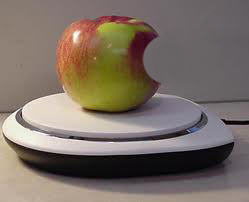--
 MacPorts
MacPorts is
only for advanced Mac users. Even advanced users will find MacPorts diabolical at times. My experience today was a very frustrating adventure. Its goal: To install the new MacPort of MPlayer version 1.0rc4.
I've been playing with MacPorts for a few years and am pleased to see the list of available ports continually growing. They have afforded me some terrific UNIX functionality that does not ship with Mac OS X. But learning about what MacPorts are, how to install them and how to use them is difficult. The learning curve is steep, the documentation is minimal, the help you'll find online is flaky and MacPorts itself can be imperfect and daunting. I am loathe to tell the tale of my adventure today because it will cause many to
run away screaming with fear! But MPlayer is a big deal program and someone has got to publish on the net how to install it
in spite of MacPorts HELL! So let me be your guide:
Porticus

A couple months back I installed the very latest version of MacPorts. To access the ports listing and install them I use a clunky but useful free program called
Porticus. There is a paid shareware alternative, but it has fallen into disrepair and is too expensive. The one thing wrong with Porticus is that you have to force it to "Reload Ports" after every installation. It pretends to do so by itself but FAILs. This sort of annoyance is entirely typical at the hacker level of users. But I got used to forcing Porticus reloads and otherwise enjoy it.
MPlayer

Knowing the new version of
MPlayer was available, I checked Porticus and joyfully found it available as a MacPort. However, it had a couple prerequisite installations. When this occurs, the ports you don't yet have installed are listed in
red. Therefore, I set about installing them. Unfortunately, the first of these ports was
impossible to install! It consistently FAILed with errors that said what was at the source site was an HTML file and that the MD5 check didn't match. Therefore, I looked around in the MacPorts directory and what I discovered blew my mind. Someone had tossed in a bizarro HTML file that essentially said the equivalent of "Sorry sonny! You can't get there for here!" Check this out:
[html stuff...]
This space is managed by SourceForge.net. You have attempted to access a URL that either never existed or is no longer active. Please check the source of your link and/or contact the maintainer of the link to have them update their records.
[html stuff...]
This note was included at part of the MacPorts installation and the note was WRONG. Because this stupid note was tossed it there, I could not install the prerequisite port and therefore could not install MPlayer! There was no way around it!
Except I am used to developers and hackers being a PITA. I went looking for what I wanted on the net anyway and sought out a way to install it in spite of the MacPorts bungle. And I succeeded. And yes kids, garbage like this proves that we remain in
The Stone Age Of Computing. (0_o)
The impossible-to-install port file was
libmad-0.15.1b.tar.gz. I Googled it. I found it. Here it is:
MAD (MPEG Audio Decoder)
Despite the dumbass note stuck in MacPorts, the file
is at SourceForge,
is downloadable and
is installable, dammit!
After downloading the file, I tried a couple ways to install it myself. First I used the Terminal, using the instructions in the included ReadMe. Then I tried the same thing using the X11 CLI. But I was a dope to bother with it because the installation was put into the wrong location, not into MacPorts where I wanted it. Therefore, I went looking around. At first I thought I'd have to post a ticket to the MacPorts group about the problem. I went over to the
MacPorts Guide and checked the
tickets section. There I read about the
Problem Hotlist page and checked it out. Skimming down the page I found this section:
Fetch failures
If fetch failed for a port, you can still get the distfile from anywhere else. For example, the main MacPorts distfiles mirror contains most ports' distfiles, or maybe the homepage of the software lists alternative download locations for source tarballs. Just download the distfile and save it to ${prefix}/var/macports/distfiles//. Make sure you get a file with exactly the same name (watch out for .tar.gz and .tar.bz2!) If a port clean --all has been done the distfile directory will have been removed. The directory for each port is created at the beginning of the fetch phase.
Note: Checksum failures after a fetch are typically a separate issue. See the FAQ.
Yeah well, I knew that
libmad was NOT at the MacPorts distfiles location on the Internet. Beats me why. However, I was pleased to see that I could bypass the idiotic note about libmad and replace it with the actual file. After searching for the correct directory, which is NOT clear from the documentation quoted above, this is where I successfully put it:
/opt/local/macports/distfiles/libmad/
Having trashed the moronic (am I out of derisive adjectives yet?) MacPorts note, I replaced it with the libmad-0.15.1b.tar.gz file.
I then went back into Porticus and successfully performed the installation of libmad. That then allowed me to successfully install MPlayer. I then verified that MPlayer was there and started in reading the man page. Consider me happy-smiley-shiny and ready to play with MPlayer. :-)
Nightmare much? I run into ridiculous chaos like this regularly. It is part of hacker level work on any computer platform. Code developers are brilliant. My lame skills only let me bludgeon through code writing. But much as I envy great coders, they are not necessarily good at other organization skills. To succeed as a hacker level user you have to be patient and tenacious at overcoming other-people organizational deficits. You have to learn to out-think the software and the developer.
 Myst Online: URU
Myst Online: URU
I had a similar nightmare last month getting the
Myst Online: URU Live Again MacPort installed and running on my Mac.
As an early
Myst adopter, I have been a fan of the sequels ever since. Cyan create my kind of games. Sadly Cyan succumbed to the biznizz anti-ethic of focusing on money rather than the customer experience as the bottom line. This is consistently how great companies become derelict. (Apple have been a success, even in hard times, by keeping the customer as priority #1). This lead Cyan to focus only on the
Windows PC market for their final project in the Myst series, the online game entitled
URU. Considering that the original Myst was developed using Apple's Hypercard, this was a
huge slap in the face of Mac users! Eventually a barely working Mac version was offered. Then URU rolled over and died. Thankfully, a transition was created to make URU a free public game. A new server was found and so URU lives again.

Thank kind people for providing a way to play URU online via MacPorts. There are two options for installing and running URU, one using
WINE and another using
Cider. I was unfamiliar with Cider, which is a Windows gaming engine for Macs from Transgaming. You can read about Cider
HERE and
HERE.
I installed the
WINE version but totally FAILed to get it running. Yes kids, WINE is another one of those flaky, annoying, tweeks required, poorly documented hacker level technologies. If you pay for it via CrossOver, it can work very nicely. But installing WINE via MacPorts and getting it to work can be very infuriating. I ended up deleting the URU WINE installation by hand.

Then I installed the
Cider version. URU now works
beautifully! Then, since URU takes up over 3 GB of disk space, I used symbolic links (NOT aliases!) to move the whole thing over to an external USB drive with total success. Since I am running on a MacBook 2GHz, I don't have the best of graphics hardware. In particular, the roving 3D wire-frame characters, most of whom are real players, resolve poorly. But everything else in the game is incredibly beautiful and fun to use. I'm enthralled. If you're into the Myst series, I highly recommend the Cider URU MacPort.
. . .
If you found this article useful, I'm pleased. If it made your hair stand on end, I'm not surprised. There is a temperament one has to develop in order to deal with today's level of hacked together software. If you can't get there, then don't worry about it. Instead stick with the more user-friendly software, of which there is plenty. Some day The Stone Age Of Computing will transition into something much more humane, or so we hope.
:-Derek
--
 Rather than pull your hair out, reinstall everything or think your Mac is broken, here is what's going on:
Rather than pull your hair out, reinstall everything or think your Mac is broken, here is what's going on: II) The other half of the problem is that Google forgot to tell anyone that they are now offering videos on YouTube in .SWF format. This is the Shockwave format, NOT the Flash format .FLV. Therefore the videos play using the Shockwave Player plug-in, NOT the Flash Player plug-in.
II) The other half of the problem is that Google forgot to tell anyone that they are now offering videos on YouTube in .SWF format. This is the Shockwave format, NOT the Flash format .FLV. Therefore the videos play using the Shockwave Player plug-in, NOT the Flash Player plug-in.












